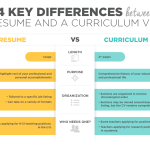In today’s competitive job market, a well-crafted resume is essential for catching the attention of recruiters and hiring managers. It’s not just about listing job experiences but also about highlighting the technical skills that set you apart. Technical skills are critical in virtually every industry, from healthcare and engineering to marketing and finance. Including the right technical skills can significantly enhance your chances of securing your dream job. In this article, we will delve into the best technical skills to include in your resume, how to tailor them for specific roles, and how to effectively present them to make a powerful impact.
Understanding Technical Skills
Technical skills, also known as hard skills, are specific abilities that are acquired through training, education, or hands-on experience. These skills can be measured, tested, and often require certification. Unlike soft skills, which are interpersonal and relational, technical skills are focused on tasks and processes. They are essential for performing job-specific duties and are often considered a critical component of job success.
In a job context, technical skills may involve using specialized equipment, software proficiency, analytical tools, industry-specific methodologies, or knowledge of certain procedures. Employers value these skills because they demonstrate your capability to perform necessary job functions efficiently.
Top Technical Skills Categories
To organize the various technical skills, we can broadly classify them into the following categories:
- Data Analysis and Research
- Digital Marketing
- Project Management
- Design and Creative Tools
- Finance and Accounting
- Healthcare Technical Skills
- Engineering and Mechanical Skills
- Sales and CRM Software Proficiency
- Administrative and Organizational Tools
- Customer Support Tools
In-Depth Review of Each Skill Category
- Data Analysis and Research
- What It Involves: Data analysis involves collecting, processing, and interpreting data to derive meaningful insights. It is a highly valuable skill in sectors like finance, healthcare, marketing, and logistics.
- Key Skills to Include:
- Microsoft Excel: Proficiency in functions, pivot tables, and data visualization.
- SPSS or SAS: Statistical analysis tools for advanced data interpretation.
- Google Analytics: Analyzing web data to improve online performance.
- Tableau: Data visualization software to create comprehensive dashboards.
- How to Highlight: Mention specific projects where you’ve used data analysis tools to drive decisions or improve processes.
- Digital Marketing
- What It Involves: This field encompasses online advertising, social media management, email marketing, and search engine optimization (SEO).
- Key Skills to Include:
- Google AdWords: Managing PPC campaigns.
- Social Media Management Tools: Hootsuite, Buffer for scheduling and managing content.
- Email Marketing Platforms: Mailchimp, HubSpot for campaign management.
- SEO: Keyword research, on-page optimization, and link-building strategies.
- How to Highlight: Use quantifiable results, such as increasing web traffic by a certain percentage or boosting conversion rates. Advertisements
- Project Management
- What It Involves: Effective project management requires planning, execution, monitoring, and closing projects while managing resources.
- Key Skills to Include:
- Microsoft Project or Trello: For project planning and management.
- Agile Methodologies: Experience in Scrum, Kanban, or other Agile frameworks.
- Gantt Charts: Creating timelines and tracking project progress.
- How to Highlight: Include specific examples of projects you’ve led, managed budgets for, or delivered ahead of schedule.
- Design and Creative Tools
- What It Involves: Design skills are essential for creating visual content, UX/UI design, and branding.
- Key Skills to Include:
- Adobe Creative Suite: Photoshop, Illustrator, InDesign for graphic design.
- Figma or Sketch: Tools for UI/UX design and prototyping.
- Canva: For quick and efficient content creation.
- How to Highlight: Showcase your design portfolio or include links to websites, apps, or graphics you’ve created.
- Finance and Accounting
- What It Involves: Financial skills are crucial in industries like banking, insurance, and corporate finance.
- Key Skills to Include:
- QuickBooks or Xero: For managing financial transactions and accounting.
- SAP: Enterprise resource planning software used for financial management.
- Financial Modeling: Building financial models for budgeting and forecasting.
- How to Highlight: Mention specific financial projects or improvements you’ve contributed to, such as cost savings or process optimization.
- Healthcare Technical Skills
- What It Involves: Healthcare professionals need specialized skills to handle medical equipment, patient data, and diagnostic tools.
- Key Skills to Include:
- Electronic Health Records (EHR): Proficiency in managing patient data.
- Medical Coding: ICD-10, CPT coding for billing and insurance.
- Telemedicine Platforms: Skills in using remote healthcare tools.
- How to Highlight: Include certifications (e.g., HIPAA), years of experience, or the volume of patients handled.
- Engineering and Mechanical Skills
- What It Involves: These skills are specific to civil, mechanical, electrical, or chemical engineering roles.
- Key Skills to Include:
- CAD Software: AutoCAD, SolidWorks for drafting designs.
- MATLAB: For simulations and algorithm development.
- CNC Programming: Knowledge of operating and programming CNC machinery.
- How to Highlight: Discuss specific projects where you’ve used these tools, such as design prototypes or process improvements.
- Sales and CRM Software Proficiency
- What It Involves: Sales roles require technical skills to manage customer relationships and analyze sales data.
- Key Skills to Include:
- Salesforce: Managing customer databases and sales pipelines.
- HubSpot: CRM for managing leads and sales conversion.
- LinkedIn Sales Navigator: For finding and managing leads.
- How to Highlight: Mention how you’ve increased sales, retained clients, or improved CRM adoption within teams.
- Administrative and Organizational Tools
- What It Involves: Admin skills are vital for managing office tasks, documentation, and workflows.
- Key Skills to Include:
- Microsoft Office Suite: Word, Excel, PowerPoint for documentation and presentations.
- Google Workspace: For collaboration and productivity.
- Asana or Monday.com: For task and project management.
- How to Highlight: Emphasize improvements in office productivity or team coordination.
- Customer Support Tools
- What It Involves: These skills are required for roles in customer service, help desks, and technical support.
- Key Skills to Include:
- Zendesk or Freshdesk: For managing customer inquiries.
- LiveChat: Handling real-time customer support.
- CRM Systems: For managing customer interactions and histories.
- How to Highlight: Include metrics like improved customer satisfaction scores or faster response times.
Tailoring Technical Skills to Job Roles
Not all technical skills are relevant for every job. It’s crucial to tailor your resume by including skills that match the job description. Analyze the job requirements and identify the most sought-after technical skills for the position. Include only the most relevant ones to avoid overcrowding your resume.
How to Demonstrate Technical Skills in a Resume
- Create a Skills Section: Dedicate a section of your resume to technical skills. Use bullet points to make it easy to scan.
- Incorporate Skills in the Experience Section: Mention specific technical skills used in past roles and highlight achievements.
- Include Certifications: If you have certifications related to the technical skills, list them in a separate section.
- Use Metrics: Quantify your achievements with numbers to showcase the impact of your technical skills. For example, “Increased website traffic by 50% using SEO strategies.”
Latest Posts
- Step-by-step guide to download and apply for jee mains admit card 202
- Comprehensive 2025 government holidays and recruitment details for job seekers
- JEE Mains Admit Card 2025: Your Step-by-Step Guide to Downloading the Hall Ticket
- Everything You Need to Know About 2025 Government Holidays Recruitment
- Comprehensive Guide to rrb d group recruitment 2025 – Eligibility, Vacancies, and Application
- Detailed guide to nps trust recruitment 2025 vacancies, eligibility and apply process
- Comprehensive guide to hpcl recruitment 2025 notification, vacancies, and application process
- ignou bed admission 2025 complete recruitment guide with eligibility and process
- Comprehensive Guide to Indian Army Agniveer Recruitment 2025 Notification and Jobs
- Everything You Must Know About CBSE Board Exams 2025 Changes & New Rules






